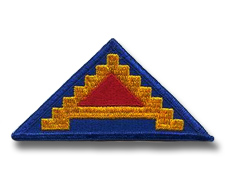Seventh
Army Artillery
Seventh U.S. Army
Looking for more information from military/civilian
personnel assigned to or associated with the U.S. Army
in Germany from 1945 to 1989. If you have any
stories or thoughts on the subject, please contact me . .
|
|
|
|
|
|
| History |
|
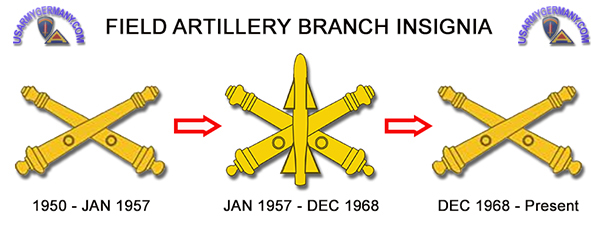 |
|
| (Source:
The Institute of Heraldry website) |
Field Artillery Branch Insignia
The Army Organization Act of 1950 consolidated Coast and Field Artillery to form the Artillery Arm, and the crossed field guns was redesignated as the Artillery branch insignia on 19 December 1950.
This insignia was superseded on 2 January 1957 by a new insignia consisting of crossed field guns surmounted by a missile, all gold.
On 20 June 1968, Air Defense Artillery was established as a basic branch of the Army and on 1 December 1968, the ADA branch was authorized to retain the former Artillery insignia, crossed field guns with missile. The former Field Artillery insignia (crossed cannons) was reinstated for the FA branch. |
|
|
|
1952
|
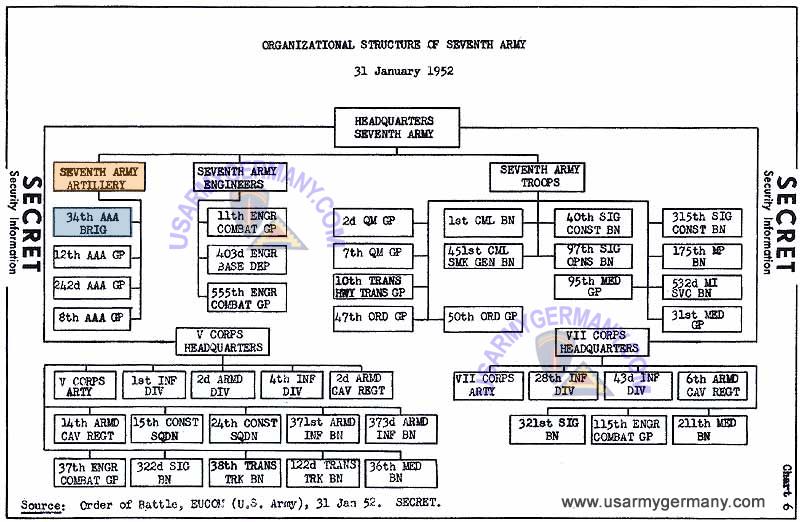
Seventh Army Organization in early 1952 |
|
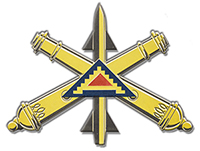 |
|
|
1956 |
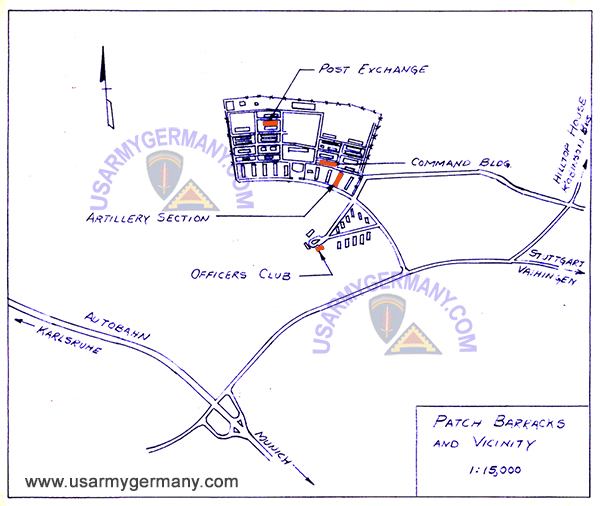
Map provided to conference attendees, 1956 |
|
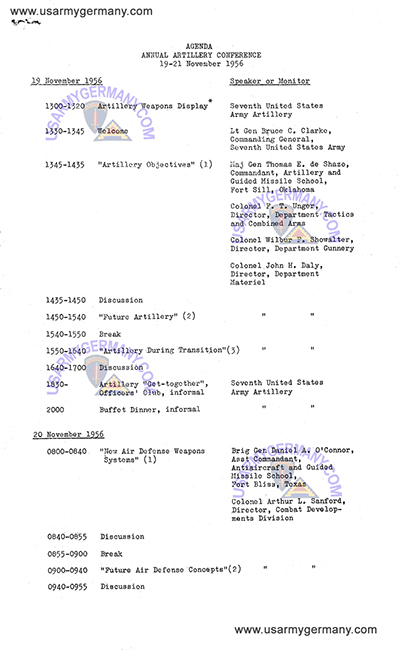
1956 Conference - Agenda |
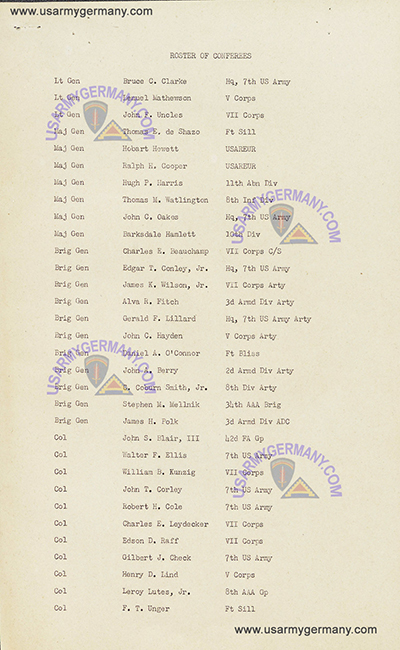
1956 Conference - Conferees |
|
|
|
(Source:
Email from Robert Grembos, Soldiers Chorus)
|
The Seventh Army Soldiers Chorus (SASC) began its history in 1963. We were based at Patch Barracks - Stuttgart. As the NCOIC for this unit from November 1963 until my rotation in June 1966 I have background on this unit's achievements. This includes Stars & Stripes stories, photos, show schedules, its International Choral Festival #1 finish in 1965 and more. Let me know if there is interest to include this history to this site.
The activities the SASC are an important piece of 7th Army's history. I know that Gen Quinn (Seventh Army Commander) was very supportive of our efforts and in fact we were employed in 'dicey' military/civilian upsets to show the positive side of the US Military. |
 |
|
|
| Seventh Army Artillery Section |
|
1958 |
| (Source: Field Manual 6-20, Field Artillery Tactics and Techniques, December 1958 |
14.b. Command Responsibilities and Relationships
| |
In a (Field) Army (, Corps, Division, or Task Force,) the senior officer in the artillery headquarters is designated as the artillery commander. He commands field artillery units retained under the control of the headquarters. In addition, he is the artillery officer
on the special staff. As the artillery officer he advises the (Field Army) commander and staff on all field artillery matters and is the fire support coordinator for the command.
|
19. (Field) Army (, Corps, Division, and Task Force) Artillery Commanders
The artillery commander of a (field) army, corps, division, or task force has the following principal responsibilities:
| |
a. Determine the requirements and recommend the allocations and employment of field artillery units, materiel, and ammunition. When appropriate, this includes requirements for units and materiel to replace or augment field artillery.
b. Command the assigned and attached field artillery not reassigned or reattached to subordinate units.
c. Plan for nuclear and non-nuclear field artillery fires in support of the plan of operations.
d. Advise the commander and staff on the employment of nuclear and non-nuclear field artillery fires.
e. Coordinate all field artillery observation within the zone of responsibility of the command (normally limited to echelons below field army).
f. Is responsible for the details of coordination of fire support as fire support coordinator for the command (ch. 11).
g. Collect, process, and disseminate information and intelligence.
h. Coordinate survey control for field artillery.
i. Direct the fire of assigned and attached field artillery not reassigned or reattached to subordinate units.
j. Recommend assignment of field artillery personnel and estimate replacement requirements for field artillery units.
k. Direct the training of field artillery units within the command.
| |
1. Counterfire activities. Corps artillery commander has responsibility for counterbattery activities. Division artillery commander has responsibility for countermortar activities. Task force artillery commanders have responsibility for both counterbattery and countermortar activities. When the distances are too great for effective centralized control of counterfire, these activities may be reassigned to subordinate artillery commanders who have or are provided the means to accomplish these activities. |
|
|
| |
| Field artillery staff at Army level: |
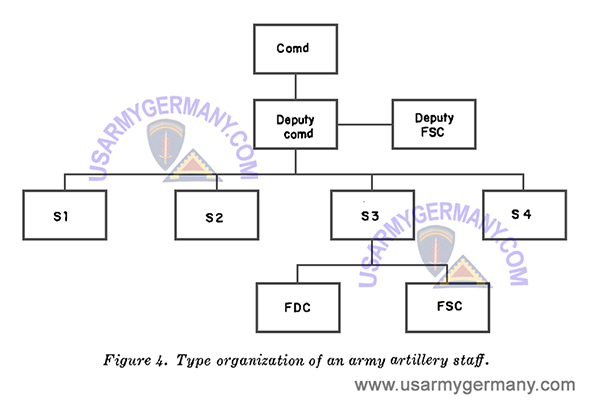 |
| |
The duties of field artillery staff officers conform generally to the principles and procedures described in FM 101-5 for the corresponding general or special staff officers.
Amplification of the duties of field artillery staff officers is discussed below:
22. Deputy Army Artillery Commander (Assistant Corps Artillery Officer)
The deputy army artillery commander (assistant corps artillery officer) performs such duties as may be assigned to him by the army (corps) artillery commander. These duties may require him to -
| |
a. Serve as the army (corps) artillery commander's deputy at the army (corps) command post.
b. Supervise and coordinate the work of field artillery personnel at the army (corps) command post.
c. Act for the army (corps) artillery commander in his capacity as fire support coordinator (ch. 11).
d. As representative of the fire support coordinator, to provide the army (corps) commander with predictions of the radioactive
fallout from friendly nuclear weapons..
e. Coordinate all field artillery observation within the zone of responsibility of the command (normally limited to echelons below field army). |
24. Executive Officer
In general, the executive officer of a field artillery staff performs the duties set forth in FM 101-5 for the chief of staff. Additionally, he may -
| |
a. Direct the establishment of the field artillery command post in the location designated by the commander and insure that the various elements, properly protected and concealed, are disposed to facilitate operations..
b. Supervise the operation of the field artillery command post to include the fire direction center. |
25. Adjutant (S1)
The S1 or adjutant of a field artillery staff is the adviser to the commander on matters pertaining to personnel and general administration.
When a separate S1 is not provided, another staff officer is designated to perform his duties.
26. S2
The S2 of a field artillery staff is primarily concerned with the direction of the target intelligence effort of artillery agencies (ch. 9). His specific duties include -
| |
a. Initiation of a systematic and coordinated search by all available collecting agencies for target information to include targets suitable for nuclear attack. To accomplish this, he must -
| |
(1) Coordinate, through the normal chain of command and through staff contacts, the work of artillery intelligence personnel in lower echelon artillery units, including the battle group artillery where appropriate. This includes the coordination of observation facilities, including Army aviation used for artillery observation, and the coordination of the artillery intelligence reporting system of lower echelon artillery units.
(2) Maintain close liaison with the intelligence sections of higher, lower, adjacent, and supported units for the purpose of exchanging information and mutual assistance in the location of targets.
(3) Foresee the need for, obtain, and distribute maps, photomaps, and aerial photographs.
(4) Study and interpret aerial photographs when no photointerpreter teams are available; supervise their activities when present.
(5) Direct the operation of countermortar (division) and counterbattery (corps) intelligence activities as described in chapter 10.
(6) Originate requests for reconnaissance missions by Air Force aircraft. |
b. Collection, evaluation, and interpretation of information and dissemination of target information and intelligence in time for units to take appropriate action.
c. Keeping the artillery commander, staff (FDC), and subordinate units informed of the enemy situation and capabilities.
d. Close collaboration with the S3 (or FDO) on intelligence and operations matters.
e. Examination of maps, photomaps, and aerial photographs for reliability of control and dissemination of this information to subordinate units.
f. Preparation and distribution of intelligence reports.
g. Keeping the S2 situation map and any other records pertaining to the S2 section that the situation may require.
h. Furnishing pertinent data for inclusion in the command report.
i. Preparing a plan for and supervising the execution of counterintelligence measures (FM 30-5).
j. Preparation of the artillery intelligence bulletin (corps and army artillery S2 only) for distribution of enemy information to higher, adjacent, and subordinate artillery commanders (to include battalions and separate batteries). The bulletins are prepared only as specifically required.
k. Supervising intelligence training for the artillery.
I. Informing the survey officer of all plans affecting survey requirements. |
27. S3
The S3 of a field artillery staff (FDO of battle group artillery) is responsible to his commander for activities pertaining to organization, training, and operations. His duties are to -
| |
a. Make recommendations to the artillery commander regarding the employment of artillery units.
b. Formulate plans as directed and prepare operation orders for the approval of the commander.
c. Keep the commander and staff informed of matters pertaining to training, combat efficiency, and disposition of artillery units.
d. Plan and supervise artillery training and operations.
e. Collaborate with other staff officers on matters affecting operations.
f. Prepare artillery fire plans.
g. Make recommendations for the employment of artillery nuclear weapons.
h. Coordinate and integrate artillery fire plans of lower echelon artillery units with each other and with the plan of operations (chs. 11 and 12).
i. Provide current information of artillery fire capabilities.
j. Keep the S4 informed to ammunition requirements.
k. Recommend allocations and reallocations of artillery units to subordinate commands.
l. Plan and supervise artillery liaison activities.
m. Keep current at FDC the information on the friendly tactical situation.
n. Obtain and distribute meteorological messages.
o. Keep the communication officer informed of all plans affecting signal communication requirements.
p. In cooperation with the artillery S2 of the next higher artillery headquarters, plan and supervise the work of intelligence personnel (in artillery units not authorized an intelligence officer).
q. Supervise the preparation of pertinent records and reports.
r. Exercise staff supervision over fire direction activities.
s. Inform the survey officer of all plans affecting survey requirements. |
28. S4
The S4 of a field artillery staff is responsible to his commander for the coordination and supervision of all logistical functions of the organization. Although all S4's have the general duties outlined for the G4 in FM 101-5, there is a difference between S4's in respect to their echelon, the scope of their operations, and the assistance they receive in carrying out their logistical responsibilities. Artillery battalion S4's and airborne division artillery S4'sare operating S4's; that is, they have the means at their disposal to procure and distribute supplies and, if necessary, to establish supply points. Nonoperating S4's do not have the means to procure and distribute supplies.Therefore, they are concerned primarily with coordination and supervision. In addition to procurement and distribution (as appropriate), an S4's duties are to -
| |
a. Prepare and supervise the execution of a plan for the timely supply of artillery ammunition (ch. 15).
b. Keep the commander and staff informed of the ammunition status of the command.
c. Keep appropriate records of the overall artillery ammunition status, the location of ammunition offices and ammunition supply points, and the available transportation.
d. Keep a current record of all traffic data and information on road nets.
e. Supervise all supply functions of the command to assure adequate procurement and proper distribution.
f. Keep a record of critical items of equipment and supplies. |
|
| |
 |
|
| |
Related
Links
|
| |
|





